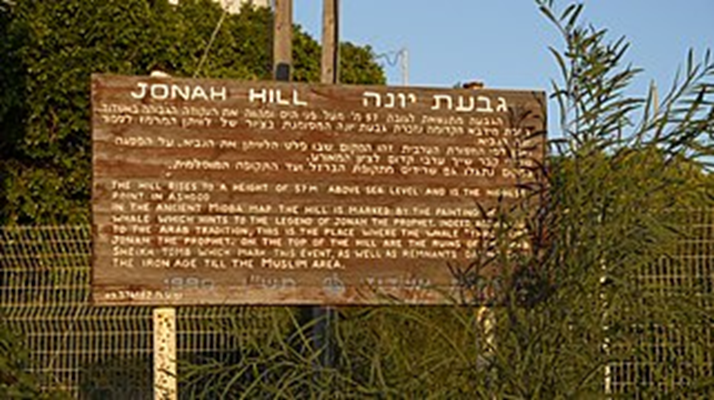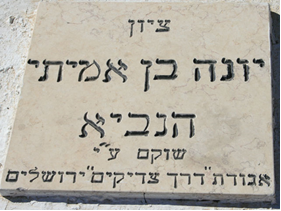

“This is the land that yet remains (for the Israelites to conquer); all the borders of the Philistines…. the five lords of the Philistines; the Gazathites, and the Ashdodites, the Ashkelonites, the Gittites (Joshua 13:3)”
According to many sources, Jonah Hill in Ashdod is the burial site of the famous prophet Jonah.
Photo Credit shmulik s. Pikiwiki Israel – Creative Commons Attribution 2.5 Generic
One of several advantages of using a tour guide in Israel, is that you will visit places that many people have never even heard of! One of these super off-the-beaten track sites, where I have brought many of my tourists, is Givat Yonah (Hill of Jonah) in Ashdod. This site is believed by many (though not all) to be the burial site of one of the most interesting prophets in history. It also strategically overlooks arguably one of Israel’s most important locations in terms of national security and the economy, the Port of Ashdod!
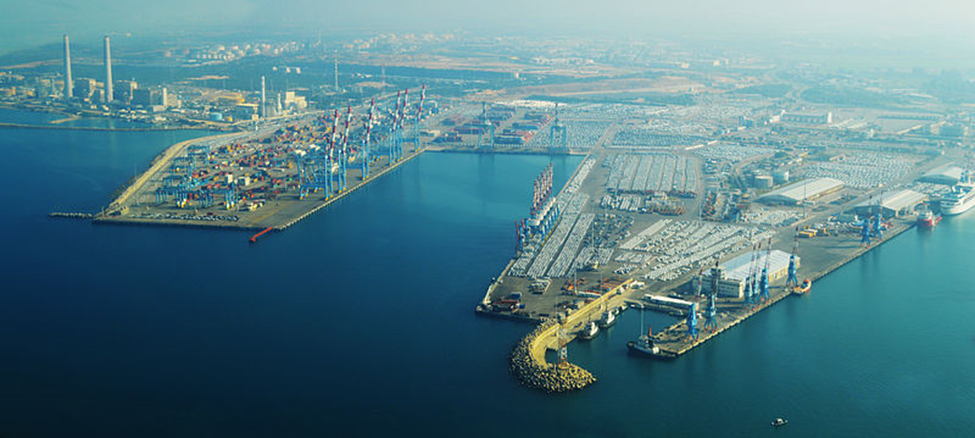
The Hill of Jonah, which rises 53 Meters (174 feet) above Sea Level (and is the highest point in this flat coastal city) has a beautiful panoramic view of the city and surrounding area. The hill is also a beautiful park, filled with trees, benches, historical monuments, and sculptures. This lovely, serene area is perfect for a picnic, or just to get away and relax from the hustle and bustle of the surrounding city.
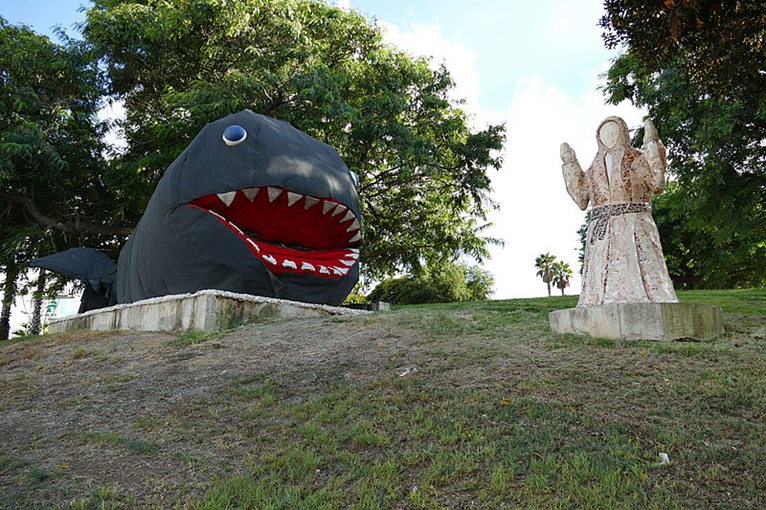
Photo Credit: Bukvoed – Creative Commons Attribution 4.0 International
In Biblical times, the hill was controlled by the Philistine ruler of nearby ancient Ashdod (see Joshua 13:3 and 15:47). Eventually the Jews were successful in throwing out the Philistines during the First Temple Period, and they built a fortress here (which continued to be inhabited during the time of Jonah). This fortress has thick walls which may have been built by King Uzziah, who threw out the Philistines from Ashdod, or one of his successors (see 2 Chronicles 26:6). The logistical advantages of having a panoramic view of the sea and entire surrounding region, made this an important place to protect.
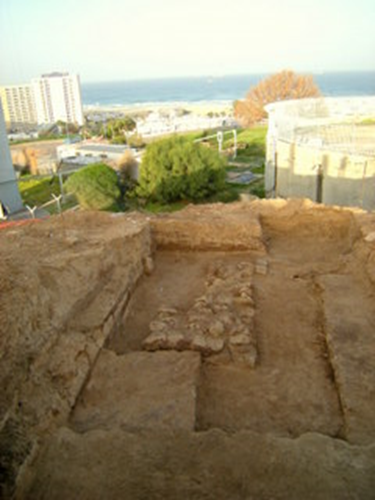
The fortress was destroyed by the Babylonians, although it continued to be used in Hellenistic, Roman, and Byzantine times, and even during the early Muslim period. Part of the attraction of this site, was that it was believed to be the burial spot of the prophet and it became a holy site where people came to pray. Some, however, believe that Jonah’s burial spot was in Northern Iraq (that site was sadly destroyed by ISIS in 2014). In fact, in the world-famous Byzantine (circa 5th century) Madaba map (the oldest contemporary map of the Holy Land ever found) this site was identified in Greek as the “Holy Jonah”.
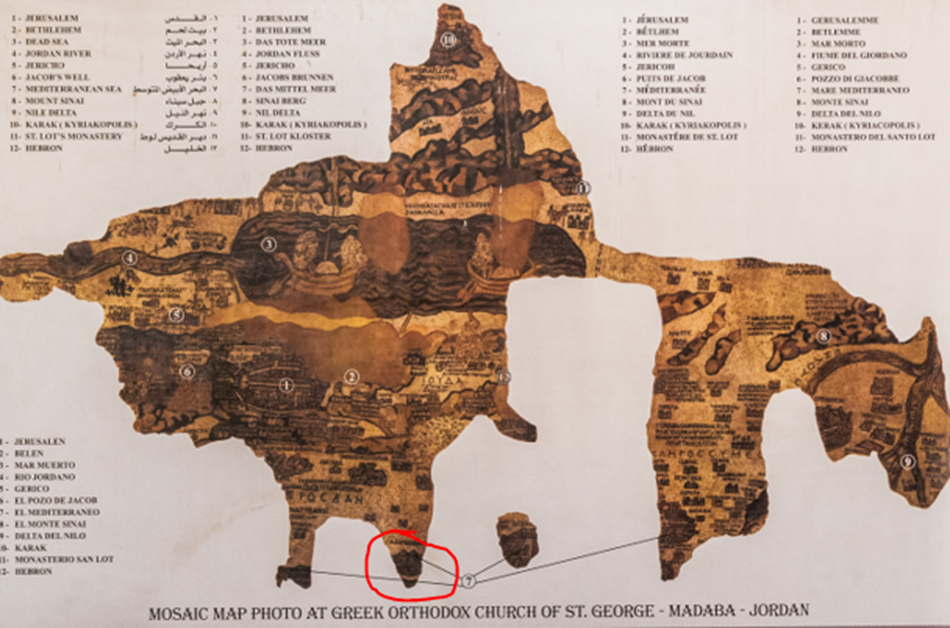
. Photo Credit: Dosseman- Creative Commons Attribution-Share Alike 4.0 International
During the British Mandate period, this hill was used as an observation point to keep ships bringing Jewish refugees from entering Israel (in 1939 after the Arabs had rioted for three years, the British issued the infamous white papers, which made almost all Jewish immigration illegal).
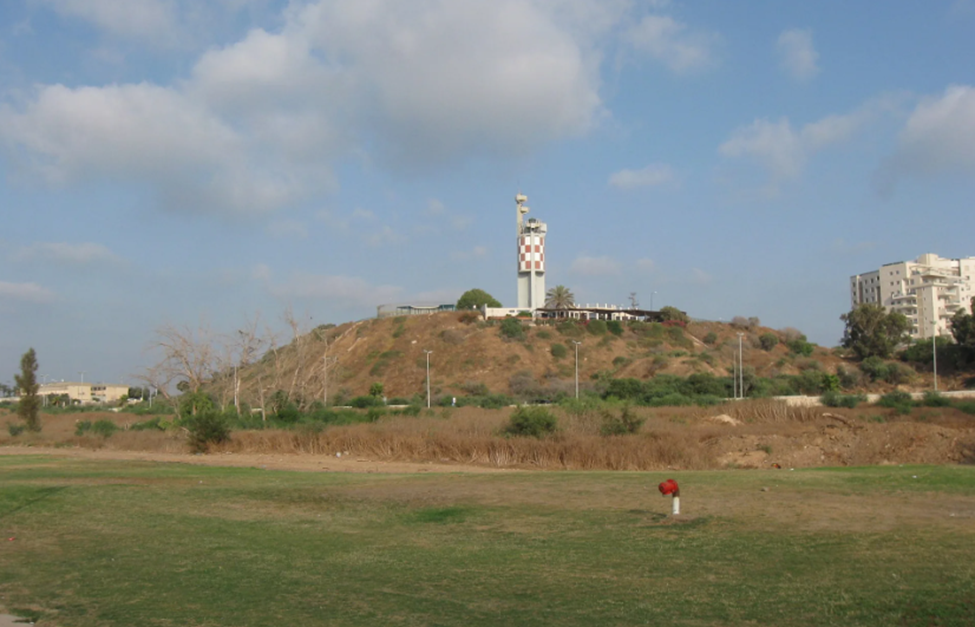
Photo Credit: Ori
By the 1950s, most of modern Ashdod was nothing but sand dunes. In 1954, then Prime Minister David Ben Gurion tasked Oved Ben Ami (an early Zionist leader who, in addition to other accomplishments, founded Netanya and was responsible for bringing the Diamond industry to Israel) with finding a good place to build a major deep-water port. Although Haifa and Eilat had deep-water ports, they were not large enough for the increasing volume of imports and exports. Rather than expanding them, they decided to build a new port on the Southern coast in order to develop the southern part of the country (rather than just keep everything concentrated in the center like Tel Aviv). Additionally, Israel’s main exports in the 1950s consisted of Jaffa oranges grown in Rehovot, Potash from Mount Sodom, and Dead Sea products like Magnesium and Bromine. Haifa’s port was considered too far to make this feasible for the long term, so something closer was needed. Ben Ami drove along the coast and saw Jonah’s hill. Standing on top, he saw the desolate sand dunes below and decided this would be the best place to build. In the mid-1950s, construction on the port (and a major electrical station nearby which would power homes in a large portion of Israel) was approved. Around these projects, Ashdod was founded as a planned city from the beginning (as opposed to a city which organically grew out of a pre-existing town or village). The first neighborhood of Ashdod was built at the foot of the hill and was appropriately called Givat Yonah (the Hill of Jonah). In 1956 the first 22 families moved in (today Ashdod is Israel’s fifth largest city). In 1965, the port of Ashdod was completed, and today 60% of all goods coming into Israel enter through here (in addition to the tens of thousands of tourists who enter from international cruise ships).

Photo Credit: Shutterstock
In addition to the Hill of Jonah, there is plenty to do in Ashdod. On your next trip to Israel, if you are looking for something a little different, this special hill and city will not disappoint!
(Rights to all images used in this article were obtained by the author for commercial use)
Please visit the author’s Israel tour guiding site: https://guidedtoursofisrael.com






![Why You Shouldn’t Be Afraid of G-d – Soul Talk [audio]](https://c622d1ec.delivery.rocketcdn.me/wp-content/uploads/2025/03/light-4681014_640-218x150.jpg)
![Modesty & Matzah – Pull Up a Chair [audio]](https://c622d1ec.delivery.rocketcdn.me/wp-content/uploads/2025/03/matzah-1566456_640-218x150.jpg)





